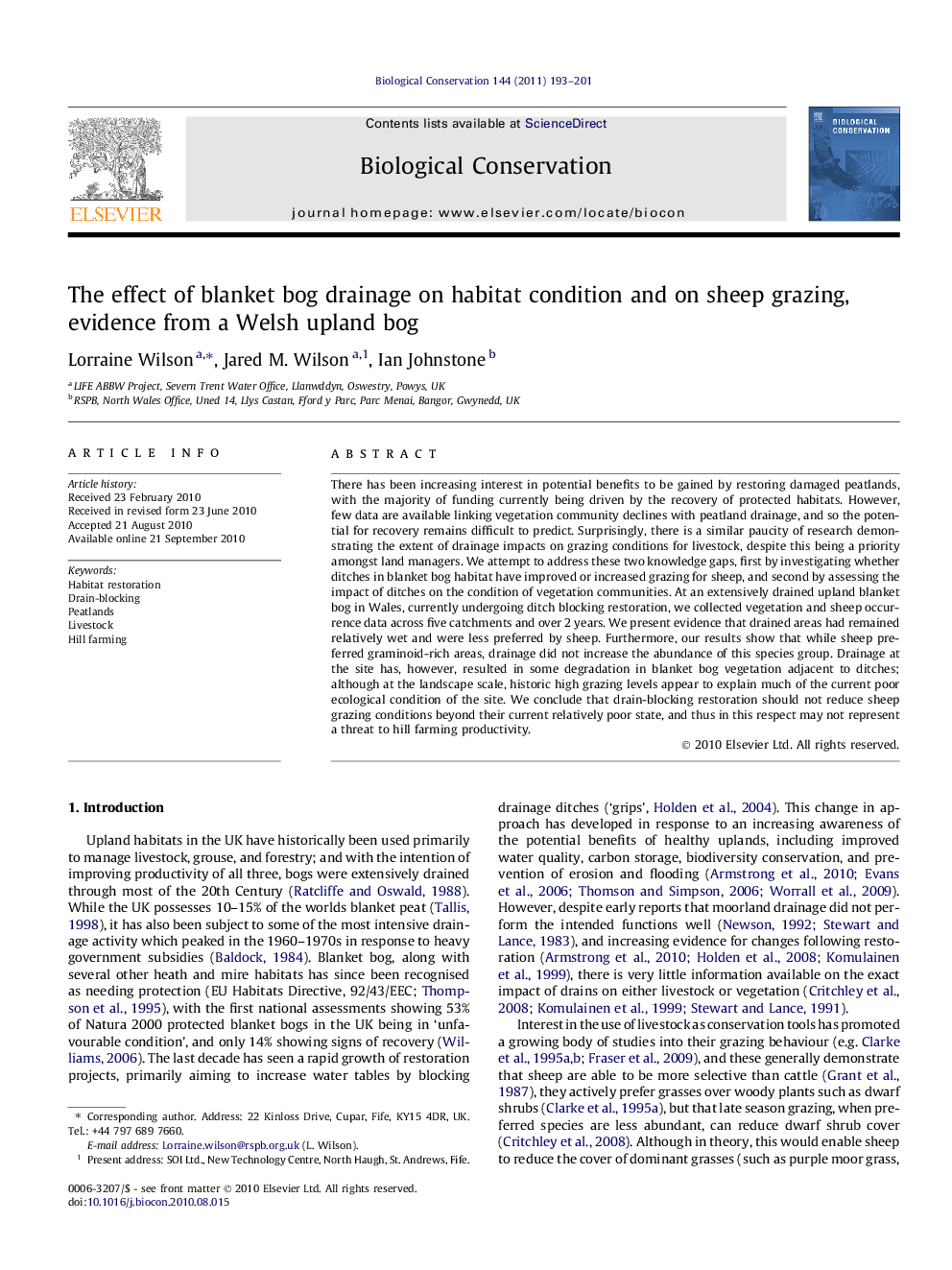| Article ID | Journal | Published Year | Pages | File Type |
|---|---|---|---|---|
| 4385677 | Biological Conservation | 2011 | 9 Pages |
Abstract
There has been increasing interest in potential benefits to be gained by restoring damaged peatlands, with the majority of funding currently being driven by the recovery of protected habitats. However, few data are available linking vegetation community declines with peatland drainage, and so the potential for recovery remains difficult to predict. Surprisingly, there is a similar paucity of research demonstrating the extent of drainage impacts on grazing conditions for livestock, despite this being a priority amongst land managers. We attempt to address these two knowledge gaps, first by investigating whether ditches in blanket bog habitat have improved or increased grazing for sheep, and second by assessing the impact of ditches on the condition of vegetation communities. At an extensively drained upland blanket bog in Wales, currently undergoing ditch blocking restoration, we collected vegetation and sheep occurrence data across five catchments and over 2Â years. We present evidence that drained areas had remained relatively wet and were less preferred by sheep. Furthermore, our results show that while sheep preferred graminoid-rich areas, drainage did not increase the abundance of this species group. Drainage at the site has, however, resulted in some degradation in blanket bog vegetation adjacent to ditches; although at the landscape scale, historic high grazing levels appear to explain much of the current poor ecological condition of the site. We conclude that drain-blocking restoration should not reduce sheep grazing conditions beyond their current relatively poor state, and thus in this respect may not represent a threat to hill farming productivity.
Related Topics
Life Sciences
Agricultural and Biological Sciences
Ecology, Evolution, Behavior and Systematics
Authors
Lorraine Wilson, Jared M. Wilson, Ian Johnstone,
